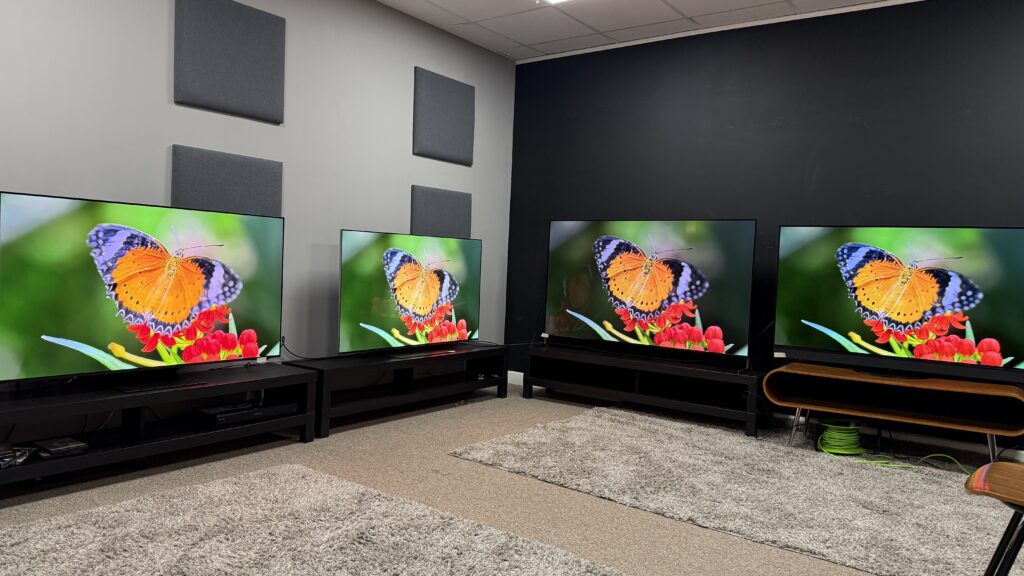
The competition for the best OLED television has escalated in 2025, shifting beyond mere brightness to encompass a broader array of features and pricing strategies. Leading the charge are industry giants LG and Samsung, who have dominated the OLED market since Samsung’s re-entry with its QD-OLED technology. Meanwhile, brands such as Panasonic, Sony, and Philips have struggled to capture significant market share.
While LG and Samsung consistently deliver stunning picture quality, rival brands also produce excellent OLED televisions. The key differentiators lie in the extensive features offered by LG and Samsung, including superior smart TV interfaces, enhanced gaming functionalities, and more aesthetically appealing designs. This combination has made LG and Samsung products particularly appealing to consumers.
Despite the strengths of Panasonic, Sony, and Philips—especially in sound quality and unique features like Philips’ Ambilight—LG and Samsung have maintained an edge in recent years due to their superior picture brightness. Older OLED models struggled in well-lit environments, but recent offerings like Samsung’s OLED Glare Free screen, first seen in the S95D, significantly enhance viewing quality in bright rooms.
A pivotal factor in the market dynamics has been pricing. Historically, LG and Samsung have managed to offer their OLED TVs at lower prices than competitors. For instance, their flagship models—the LG G4 and Samsung S95D—were launched in March 2024 at approximately $2,600 for the 65-inch variants, while Panasonic’s Z95A, released later that year, started at $3,100. Although the Z95A boasted a superior sound system and arguably better image quality, its higher price tag posed a challenge in attracting buyers, particularly in the UK market.
As 2025 progressed, LG and Samsung continued to elevate their offerings. The launch of the LG G5 and Samsung S95F in early 2025 came with price tags of $3,399 for the 65-inch models. Anticipation for sales events, such as Prime Day, led to rapid price reductions. However, the unexpected aggressive pricing strategies from Sony and Panasonic added new complexity to the competitive landscape.
Sony’s Bravia 8 II, featuring QD-OLED technology, debuted at $3,499, while Panasonic’s Z95B launched at $3,399. These prices closely matched those of LG and Samsung, effectively leveling the playing field. By mid-August 2025, the price landscape had evolved significantly, with LG’s G5 and Samsung’s S95F dropping to $2,999 and $3,299, respectively, while Panasonic and Sony’s offerings were similarly priced.
The ongoing debate regarding the value proposition of LG and Samsung compared to their rivals has become increasingly nuanced. Recent blind tests conducted by TechRadar and Value Electronics yielded varied results. TechRadar’s panel favored the brighter, more vibrant displays of the Samsung S95F and LG G5, while experts from Value Electronics preferred the superior picture accuracy of the Sony Bravia 8 II and Panasonic Z95B, despite the latter models lacking some advanced gaming features.
In terms of built-in sound quality, both the Panasonic Z95B and Sony Bravia 8 II outperformed the LG and Samsung models, which often require additional soundbar investments for optimal audio experience. Although LG and Samsung maintain an advantage in picture brightness, the overall competition among these four brands is increasingly fierce.
As 2025 unfolds, the OLED TV market is set for further developments, with LG and Samsung needing to remain vigilant against the rising competition from Panasonic and Sony. The choice for consumers seeking the best OLED TV has become more challenging, with numerous factors influencing their purchasing decisions. The race for the title of the top OLED TV in 2025 is poised to be a closely contested affair.






